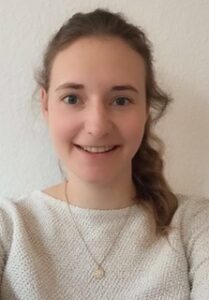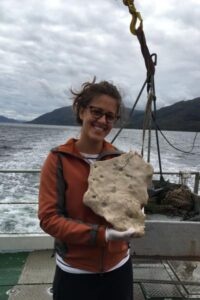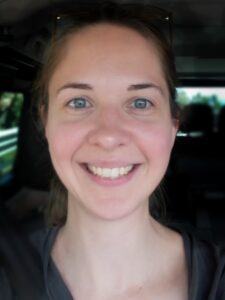Project B2 (PI Schmitz-Streit) will study host-microbe interactions during early developmental stages, focusing on the jellyfish system Aurelia aurita. The project aims to identify the members in the jellyfish microbiome whose presence is crucial for asexual reproduction and to decipher the role of host-derived quorum quenching (QQ) activities in host-microbe interactions.
Microbiota-host interactions at the base of the metazoan tree
Researchers
B2.1: Functional repertoire of A. aurita's microbiota crucial for asexual reproduction and the role of host-derived Quorum Quenching for host microbe interaction
Dr. Vasiliki Koutsouveli
Prof. Dr. Ruth Anne Schmitz-Streit
B2.2 (E): The role of associated microbiota for fitness and invasion success in the comb jelly Mnemiopsis leidyi
Dr. Vasiliki Koutsouveli
Related Publications
The chromosome-level genome of the ctenophore Mnemiopsis leidyi A. Agassiz, 1865 reveals a unique immune gene repertoire
Koutsouveli, V., Torres-Oliva, M., Bayer, T., Fuß, J., Grossschmidt, N., Marulanda-Gomez, A. M., Jensen, N., Gill, D., Schmitz, R. A., Pita, L., Reusch, T. B. (2025). Genome Biology and Evolution, evaf006. doi: https://doi.org/10.1093/gbe/evaf006
Microbiota-derived β-carotene is required for strobilation of Aurelia aurita by impacting host retinoic acid signaling
Jensen, N., Weiland-Bräuer, N., Chibani, C. M., Schmitz, R. A. (2025). iScience. doi: https://doi.org/10.1016/j.isci.2024.111729
Four novel Caudoviricetes bacteriophages isolated from Baltic Sea water infect colonizers of Aurelia aurita
Comparative genomics of novel Bacteroides acidifaciens isolates reveals candidates for adaptation to host subspecies in house mice
(2023) Comparative genomics of novel Bacteroides acidifaciens isolates reveals candidates for adaptation to host subspecies in house mice BioRxiv
Microbial community changes correlate with impaired host fitness of Aurelia aurita after environmental challenge
Pinnow N, Chibani CM, Güllert S, Weiland-Bräuer N (2023) Microbial community changes correlate with impaired host fitness of Aurelia aurita after environmental challenge. anim microbiome 5, 45 (2023). doi: 10.1186/s42523-023-00266-4
Antimicrobial peptides originating from expression libraries of Aurelia aurita and Mnemiopsis leidyi prevent biofilm formation of opportunistic pathogens
Ladewig L, Gloy L, Langfeldt D, Pinnow N, Weiland-Bräuer N, Schmitz RA (2023) Antimicrobial peptides originating from expression libraries of Aurelia aurita and Mnemiopsis leidyi prevent biofilm formation of opportunistic pathogens. Microorganisms, 11(9), 2184. doi: 10.3390/microorganisms11092184
First insights into the Aurelia aurita transcriptome response upon manipulation of its microbiome
Weiland-Bräuer N, Koutsouveli V, Langfeldt D, Schmitz RA (2023) First insights into the Aurelia aurita transcriptome response upon manipulation of its microbiome. Front. Microbiol. 14:1183627. doi: 10.3389/fmicb.2023.1183627
The Life Cycle of Aurelia aurita Depends on the Presence of a Microbiome in Polyps Prior to Onset of Strobilation
Jensen N, Weiland-Bräuer N, Joel S, Chibani CM, Schmitz RA (2023) The Life Cycle of Aurelia aurita Depends on the Presence of a Microbiome in Polyps Prior to Onset of Strobilation. Microbiology Spectrum, 11(4), e00262-23. doi: 10.1128/spectrum.00262-23
Closely related Bacteroides of the murine intestinal microbiota affect each other’s growth positively or negatively
Invasion genomics uncover contrasting scenarios of genetic diversity in a widespread marine invader.
Jaspers C, Ehrlich M, Pujolar JM, Künzel S, Bayer T, Limborg MT, Lombard F, Browne WE, Stefanova K, Reusch TBH (2021): PNAS. 118(51)e2116211118. doi: 10.1073/pnas.2116211118
The native microbiome is crucial for offspring generation and fitness of Aurelia aurita
Weiland-Bräuer N, Pinnow N, Langfeldt D, Roik A, Güllert S, Chibani CM, Reusch TBH, Schmitz RA (2020) mBio. 11(6) e02336-20. doi: 10.1128/mBio.02336-20
B-vitamin nutrition in the pea aphid-Buchnera symbiosis
Blow F, Bueno E, Clark N, Zhu TD, Chung SH, Güllert S, Schmitz RA, Douglas AE (2020) Journal of Insect Physiology. 126:104092. doi: 10.1016/j.jinsphys.2020.104092
Cultivable microbiota associated with Aurelia aurita and Mnemiopsis leidyi
Weiland-Bräuer N, Prasse D, Brauer A, Jaspers C, Reusch TBH, Schmitz RA (2020) MicrobiologyOpen. 9(9):e1094 doi: 10.1002/mbo3.1094
Differences in the microbiota of native and non-indigenous gelatinous zooplankton organisms in a low saline environment
Jaspers C, Weiland-Bräuer N, Rühlemann MC, Baines JF, Schmitz RA, Reusch TBH (2020) Sci Total Environ. 734:139471. doi: 10.1016/j.scitotenv.2020.139471
Advancing our functional understanding of host–microbiota interactions: a need for new types of studies
He J, Lange J, Marinos G, Bathia J, Harris D, Soluch R, Vaibhvi V, Deines P, Hassani MA, Wagner K-S, Zapien‐Campos R, Jaspers C, Sommer F (2019) BioEssays, 1900211 (1-5). doi: 10.1002/bies.201900211
Host-microbe interactions in the chemosynthetic Riftia pachyptila symbiosis
, , , , , , , , , , doi: 10.1128/mBio.02243-19
Microbiota differences of the comb jelly Mnemiopsis leidyi in native and invasive sub-populations
Jaspers C, Weiland-Bräuer N, Fischer M, Künzel S, Schmitz RA, Reusch TBH (2019) Front. Mar. Sci. 6: 635. doi: 10.3389/fmars.2019.00635
Comparative analysis of amplicon and metagenomic sequencing methods reveals key features in the evolution of animal metaorganisms
Rausch P, Rühlemann M, Hermes BM, Doms S, Dagan T, Dierking K, Domin H, Fraune S, von Frieling J, Hentschel U, Heinsen F-A, Höppner M, Jahn MT, Jaspers C, Kissoyan KAB, Langfeldt D, Rehman A, Reusch TBH, Roeder T, Schmitz RA, Schulenburg H, Soluch R, Sommer F, Stukenbrock E, Weiland-Bräuer N, Rosenstiel P, Franke A, Bosch T, Baines JF (2019) Microbiome, doi: 10.1186/s40168-019-0743-1
Neutrality in the metaorganism
Sieber M, Pita L, Weiland-Bräuer N, Dirksen P, Wang J, Mortzfeld B, Franzenburg S, Schmitz RA, Baines JF, Fraune S, Hentschel U, Schulenburg H, Bosch TCG, Traulsen A (2019) PLoS Biol., DOI: 10.1371/journal.pbio.3000298
Resolving structure and function of metaorganisms through a holistic framework 2 combining reductionist and integrative approaches
Jaspers C, Fraune S, Consortium of Australian Academy of Science Boden Research Conference Participants, Arnold AE, Miller DJ, Bosch TCG, Voolstra CR (2019) Zoology. doi: 10.1016/j.zool.2019.02.007
Potential role of host-derived quorum quenching in modulating bacterial colonization in the moon jellyfish Aurelia aurita
Weiland-Bräuer N, Pinnow N, Fischer MA, Schmitz RA (2019) Scientific Reports, 9(1), 34. DOI:10.1038/s41598-018-37321-z
Functions of the Microbiota for the Physiology of Animal Metaorganisms
Esser D, · Lange J, · Marinos G, · Sieber M, Best L, Prasse D, Bathia J, Rühlemann MC, Boersch K, Jaspers C, Sommer F (2018) J Innate Immun DOI: 10.1159/000495115
Metaorganisms in extreme environments: do microbes play a role in organismal adaptation?
Bang C, Dagan T, Deines P, Dubilier N, Duschl W J, Fraune S, Hentschel U, Hirt H, Hülter N, Lachnit T, Picazo D, Galan P L, Pogoreutz C, Rädecker N, Saad M M, Schmitz R A, Schulenburg H, Voolstra C R, Weiland-Bräuer N, Ziegler M, Bosch T C G (2018); Zoology, doi: 10.1016/j.zool.2018.02.004
Microbial contributions to the persistence of coral reefs.
Webster N S, Reusch T B H (2017); ISME J., doi: 10.1038/ismej.2017.66
Combination of Bottom-up 2D-LC-MS and Semi-top-down GelFree-LC-MS Enhances Coverage of Proteome and Low Molecular Weight Short Open Reading Frame Encoded Peptides of the Archaeon Methanosarcina mazei.
Cassidy L, Prasse D, Linke D, Schmitz R A, Tholey A (2016)
J Proteome Res., 15(10):3773-3783. doi: 10.1021/acs.jproteome.6b00569







